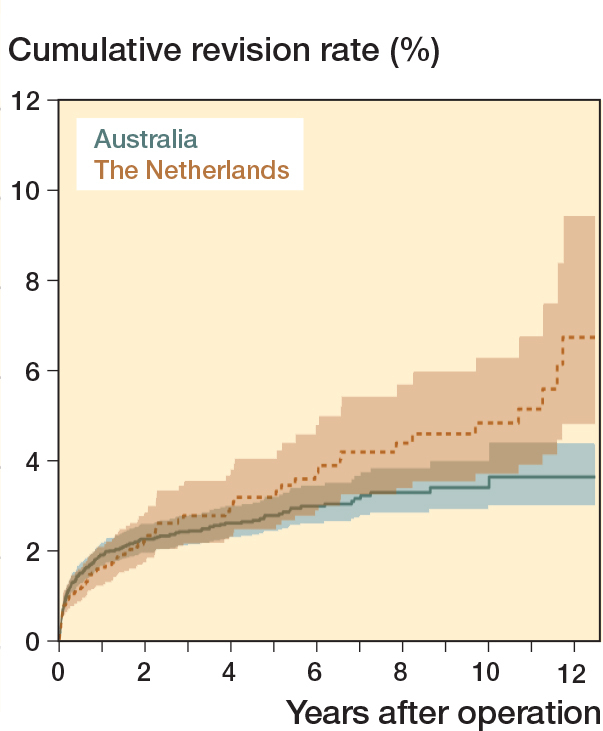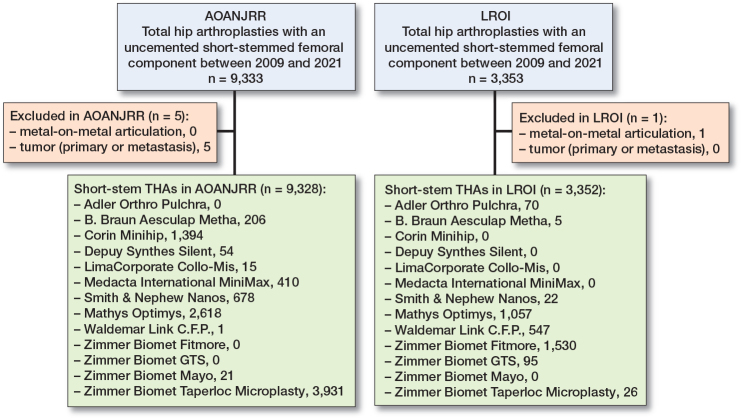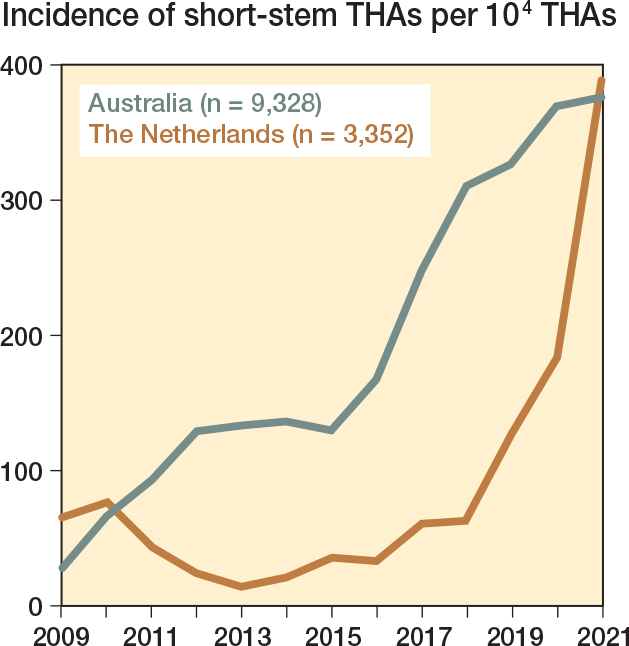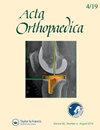澳大利亚和荷兰的短柄髋关节置换术:比较澳大利亚骨科协会国家关节置换术登记处(AOANJRR)和荷兰关节置换术登记处(LROI)的12,680例病例。
IF 2.5
2区 医学
Q1 ORTHOPEDICS
引用次数: 0
摘要
背景和目的:我们比较了澳大利亚骨科协会国家关节置换登记(AOANJRR)和荷兰关节置换登记(LROI)关于非骨水泥短柄全髋关节置换术(tha)的患者、假体和手术特征以及翻修率。患者和方法:2009年至2021年期间进行的所有未骨水泥短柄股骨假体tha纳入AOANJRR (n = 9,328)和LROI (n = 3,352)。2009-2021年和2015-2021年的数据进行Kaplan-Meier生存分析和多变量Schemper加权Cox回归分析,以总体修订为终点。结果:澳大利亚男性患者比例(51%比40%)、ASA III-IV评分患者比例(30%比3.7%)、BMI≥30.0比例(39%比19%)、股骨长度36mm比例(58%比20%)均高于荷兰。澳大利亚和荷兰的短茎tha具有可比的10年修正率(3.4%,95%可信区间[CI] 2.9-4.0 vs. 4.8%, CI 3.7-6.3)。2009-2021年数据的多变量Cox回归分析显示,荷兰短茎tha的修订风险较高(HR 1.8, CI 1.1-2.8),而2015-2021年数据校正更多潜在混杂因素后,修订风险相当(HR 0.9, CI 0.5-1.7)。结论:澳大利亚和荷兰的短茎tha具有相似的粗修率和调整后的修校正率,在10年随访时是可以接受的。本文章由计算机程序翻译,如有差异,请以英文原文为准。



Short-stem hip arthroplasty in Australia and the Netherlands: a comparison of 12,680 cases between the Australian Orthopaedic Association National Joint Replacement Registry (AOANJRR) and the Dutch Arthroplasty Register (LROI).
Background and purpose We compared the Australian Orthopaedic Association National Joint Replacement Registry (AOANJRR) and the Dutch Arthroplasty Register (LROI) regarding patient, prosthesis, and procedure characteristics as well as revision rates for uncemented short-stem total hip arthroplasties (THAs). Patients and methods All THAs with an uncemented short-stemmed femoral component performed between 2009 and 2021 were included from the AOANJRR (n = 9,328) and the LROI (n = 3,352). Kaplan–Meier survival analyses and multivariable Schemper’s weighted Cox regression analyses with data from 2009–2021 and 2015–2021 were performed with overall revision as endpoint. Results In Australia, the proportion of male patients (51% vs. 40%), patients with ASA III–IV score (30% vs. 3.7%), BMI ≥ 30.0 (39% vs. 19%), and femoral heads of 36 mm (58% vs. 20%) were higher than in the Netherlands. Short-stem THAs in Australia and the Netherlands had comparable 10-year revision rates (3.4%, 95% confidence interval [CI] 2.9–4.0 vs. 4.8%, CI 3.7–6.3). Multivariable Cox regression analyses with data from 2009–2021 showed a higher risk for revision of short-stem THAs performed in the Netherlands (HR 1.8, CI 1.1–2.8), whereas the risk for revision was comparable (HR 0.9, CI 0.5–1.7) when adjusted for more potential confounders using data from 2015–2021. Conclusion Short-stem THAs in Australia and the Netherlands have similar crude and adjusted revision rates, which are acceptable at 10 years of follow-up.
求助全文
通过发布文献求助,成功后即可免费获取论文全文。
去求助
来源期刊

Acta Orthopaedica
医学-整形外科
CiteScore
6.40
自引率
8.10%
发文量
105
审稿时长
4-8 weeks
期刊介绍:
Acta Orthopaedica (previously Acta Orthopaedica Scandinavica) presents original articles of basic research interest, as well as clinical studies in the field of orthopedics and related sub disciplines. Ever since the journal was founded in 1930, by a group of Scandinavian orthopedic surgeons, the journal has been published for an international audience. Acta Orthopaedica is owned by the Nordic Orthopaedic Federation and is the official publication of this federation.
 求助内容:
求助内容: 应助结果提醒方式:
应助结果提醒方式:


